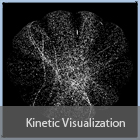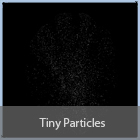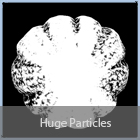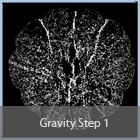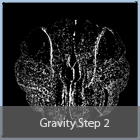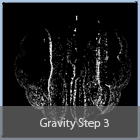Without the additional information like shadows or specular highlights it can be very difficult to distinguish between points on concave and convex points with the same curvature as they appear the same.
Kinetic Visualization is a technique using particles to enhance the geometric properties of a surface by the use of motion. A particle with constant speed in 3D will change the speed in screen space depending on hills and valleys. The original paper was published on the SIGGRAPH 2002 and can be found here.
Different particle sizes and speed influence how the geometric surface is perceived. Also the visual guidance can be improved by techniques like particle repulsion to prevent clustering of particles or flocking of particles to let close particles follow the same direction.
Due to the nature of the technique static images can not describe the visual effect but they are provided to give an approximate look of how it looks.
On a i5-3570 CPU @3,40GHz with a Radeon HD 7950 50K-100K particles area easily manageable by a CPU implementation even without any spatial acceleration structure, occlusion culling other than z-buffer tests or other speed-up techniques.
Modern particle systems on the GPU with the use of compute shaders nowadays are able to render 1 to 16 Million of particles, which would allow to use very tiny particles and increase the visual appearance of particles. Such particles systems are proposed under: Building a Million-Particle System and A thoroughly modern particle system.
The pumpkin model was borrowed from the course of the CSAIL lab of the MIT Intro to Computer Graphics, Fall 2003 and is not available for download here as they kindly asked not to redistribute the model!


